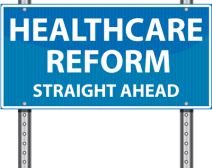 This week, I had the privilege to present at the Energy and Commerce Subcommittee on Commerce, Manufacturing and Trade Hearing that took place in Washington, DC. As part of the “Disrupter Series: Health Care Apps” hearing, leaders in the healthcare industry discussed how mobile applications are disrupting the ways in which doctors and patients engage in the health care system and impact the affordability, accessibility, and delivery of care.
This week, I had the privilege to present at the Energy and Commerce Subcommittee on Commerce, Manufacturing and Trade Hearing that took place in Washington, DC. As part of the “Disrupter Series: Health Care Apps” hearing, leaders in the healthcare industry discussed how mobile applications are disrupting the ways in which doctors and patients engage in the health care system and impact the affordability, accessibility, and delivery of care.
Author Archives: Matt Patterson, MD
Patient-centric Approaches to Data are Great…Except When They’re Not
 In a variety of recent private and panel discussions with health and policy leaders, I’ve heard encouraging talk around interoperability through open and available application programming interfaces (APIs). Public comments by Health and Human Services Secretary Sylvia Mathews Burwell and Centers for Medicare and Medicaid Acting Administrator Andy Slavitt indicate there is sincere commitment to making this a reality.
In a variety of recent private and panel discussions with health and policy leaders, I’ve heard encouraging talk around interoperability through open and available application programming interfaces (APIs). Public comments by Health and Human Services Secretary Sylvia Mathews Burwell and Centers for Medicare and Medicaid Acting Administrator Andy Slavitt indicate there is sincere commitment to making this a reality.
While this momentum seems promising, when Meaningful Use Stage 3 is mentioned – particularly its requirements for making data available to patient facing applications – I see the potential for unintended and terrible consequences for clinician workflows.
Making Sense of The Joint Commission’s Change of Heart on Secure Texting
 In May, The Joint Commission announced that it was changing its five-year-old ban on texting, stating that effective immediately health care organizations may now allow orders to be transmitted via text message.
In May, The Joint Commission announced that it was changing its five-year-old ban on texting, stating that effective immediately health care organizations may now allow orders to be transmitted via text message.
The topic of ‘secure messaging’ has long been a polarizing topic within the health care industry. Some industry veterans are against it – they question whether this method of communication truly can be secure. Others believe that allowing physicians to issue orders via text messaging is just a matter of time, as there are great tools now available that are HIPAA compliant and provide the security and audit trail needed to make this workflow improvement. I am in the latter group.
How the HLC Proposes to Transform Healthcare Now
 There is broad agreement that the U.S. healthcare system must focus on improving overall care quality and cost efficiency. The pressures imposed on the system by the Affordable Care Act make this need abundantly clear. The Healthcare Leadership Council (HLC) is offering ways to transform healthcare by proposing six reforms developed by senior leaders from all sectors, engaged patient groups and key industry voices. The action areas include health information interoperability; changes to federal anti-kickback and physician self-referral (Stark) laws; health information flow improvements focused on patient privacy laws and regulations; FDA (Food and Drug Administration) reforms; comprehensive care planning; and medication therapy management.
There is broad agreement that the U.S. healthcare system must focus on improving overall care quality and cost efficiency. The pressures imposed on the system by the Affordable Care Act make this need abundantly clear. The Healthcare Leadership Council (HLC) is offering ways to transform healthcare by proposing six reforms developed by senior leaders from all sectors, engaged patient groups and key industry voices. The action areas include health information interoperability; changes to federal anti-kickback and physician self-referral (Stark) laws; health information flow improvements focused on patient privacy laws and regulations; FDA (Food and Drug Administration) reforms; comprehensive care planning; and medication therapy management.
HIPAA: Helping or Hurting?
 Much has changed in the years since HIPAA was first passed into law, not the least of which is the use of mobile technology in healthcare. As a physician, patient, and healthcare technology business leader, I have experienced numerous frustrations and inefficiencies resulting from practices struggling to adhere to the letter of the HIPAA law rather than embracing its spirit.
Much has changed in the years since HIPAA was first passed into law, not the least of which is the use of mobile technology in healthcare. As a physician, patient, and healthcare technology business leader, I have experienced numerous frustrations and inefficiencies resulting from practices struggling to adhere to the letter of the HIPAA law rather than embracing its spirit.
Looking Ahead in 2016: More Consumerism and Innovation, Less Gadgets, Still Not Enough Interoperability
 With a new year just getting started, most realists recognize that for all intents and purposes ACA is here to stay. No matter what discourse has transpired or how the next presidential election turns out, we are down a path of value-based care with no turning back. With that in mind, 2016 will see consumers having no other choice but to get more involved in their healthcare spend. Many more people are now insured, and benefit designs increasingly place more burden on the consumer to understand what’s covered, what’s not, and how best to spend their healthcare dollars. With this backdrop, here are four developments I expect to see: Continue reading
With a new year just getting started, most realists recognize that for all intents and purposes ACA is here to stay. No matter what discourse has transpired or how the next presidential election turns out, we are down a path of value-based care with no turning back. With that in mind, 2016 will see consumers having no other choice but to get more involved in their healthcare spend. Many more people are now insured, and benefit designs increasingly place more burden on the consumer to understand what’s covered, what’s not, and how best to spend their healthcare dollars. With this backdrop, here are four developments I expect to see: Continue reading
Serving the American Healthcare Revolution
 In my ritual of year-end reflection, I am struck by an unshakeable parallel between the general healthcare climate today, and the atmosphere surrounding the late stages of the American Revolution and the start of our fledgling nation. I’ve found myself returning to this construct as a way to organize my efforts in alignment with a sincere desire to bring about lasting improvements in the way we care for each other and promote health in our country.
In my ritual of year-end reflection, I am struck by an unshakeable parallel between the general healthcare climate today, and the atmosphere surrounding the late stages of the American Revolution and the start of our fledgling nation. I’ve found myself returning to this construct as a way to organize my efforts in alignment with a sincere desire to bring about lasting improvements in the way we care for each other and promote health in our country.
I do not intend to trivialize the events and complexity of our nation’s birth, nor do I seek to elevate healthcare to an unmerited ideological loftiness. My words will reveal that at my core, I am a patriot. I served in the U.S. Navy and feel forever connected to protecting the key elements of our constitution. Many of those guiding principles were important to forming my personal mission to bring about effective, accessible care and improved health for all people. My transition away from day-to-day clinical practice toward addressing systematic enhancement of healthcare delivery was prompted by an atmosphere of disruption that I see as akin to what occurred in the late 18th century. Then, like now, there existed a pervasive air of opportunity, challenge, and responsibility that seldom occurs in a lifetime. The thoughts, experiences, and work of John Adams illustrate all of these elements well.
Shifting Our Thinking to Prepare for the Future
 While health systems are facing the need to provide better outcomes at a lower cost, there is only so much that can be achieved through consolidation, incentives, and standardization. Most recognize that in order to continue moving the needle on cost, hospitals and health systems will require fundamental redesign in the way care is provided. Business, clinical, and technology thought leadership has an opportunity to create a virtuous cycle where innovation can both inform the direction for and respond to the requirements of care pathway transformation. Mobility, interoperability, and analytics are all required to deliver intelligent data at the moment of care to the care team and consumers.
While health systems are facing the need to provide better outcomes at a lower cost, there is only so much that can be achieved through consolidation, incentives, and standardization. Most recognize that in order to continue moving the needle on cost, hospitals and health systems will require fundamental redesign in the way care is provided. Business, clinical, and technology thought leadership has an opportunity to create a virtuous cycle where innovation can both inform the direction for and respond to the requirements of care pathway transformation. Mobility, interoperability, and analytics are all required to deliver intelligent data at the moment of care to the care team and consumers.
Today’s Pressure Breeds Tomorrow’s Solutions
It is no secret that health systems are under intense pressure to deliver better outcomes at lower costs, and standardizing acute care workflow will only carry providers so far. Truly moving the needle on cost and outcomes will require a fundamental redesign in care delivery; otherwise, health systems may well find themselves left out. Care keeps shifting to environments in which hospitals have less influence: what was once critical care can now be managed in an in-patient unit; what was once in the hospital is now in an office; what was once in the office is now at home.
What stage of “Meaningful Interoperability” are you?
 The Office of the National Coordinator for Health Information Technology (ONC) just released what it calls “A 10-Year Vision to Achieve an Interoperable Health IT Infrastructure.” The directive generating the most attention calls for “a common set of electronic clinical information…at the nationwide level by the end of 2017.” According to ONC, the common data set would consist of about 20 basic elements, such as patient demographics and lab test results.
The Office of the National Coordinator for Health Information Technology (ONC) just released what it calls “A 10-Year Vision to Achieve an Interoperable Health IT Infrastructure.” The directive generating the most attention calls for “a common set of electronic clinical information…at the nationwide level by the end of 2017.” According to ONC, the common data set would consist of about 20 basic elements, such as patient demographics and lab test results.
At first blush, the ONC directive is a small step in the right direction, but sets the bar awfully low. Rest assured that vendors will consider 20 basic elements the maximum data set, not the minimum. A more effective approach would, for example, specify vocabularies (LOINC, RxNORM), document types (JSON, XML) and transport mechanisms (HTTPS or other TLS) to be used when sending or receiving data instead of focusing on the data elements themselves.
